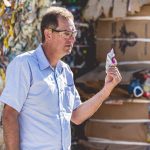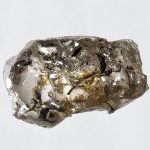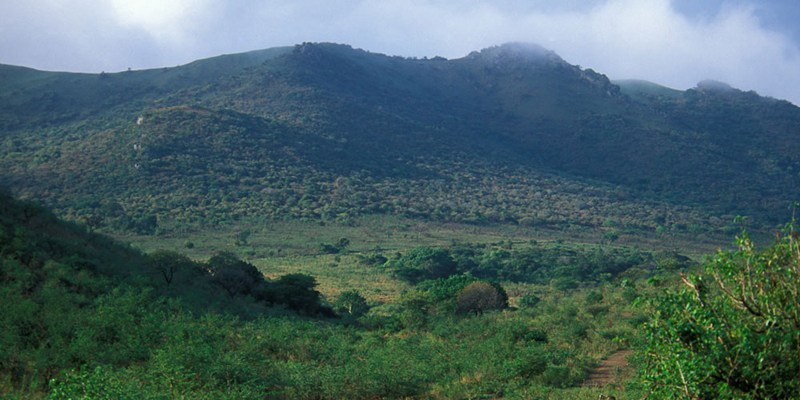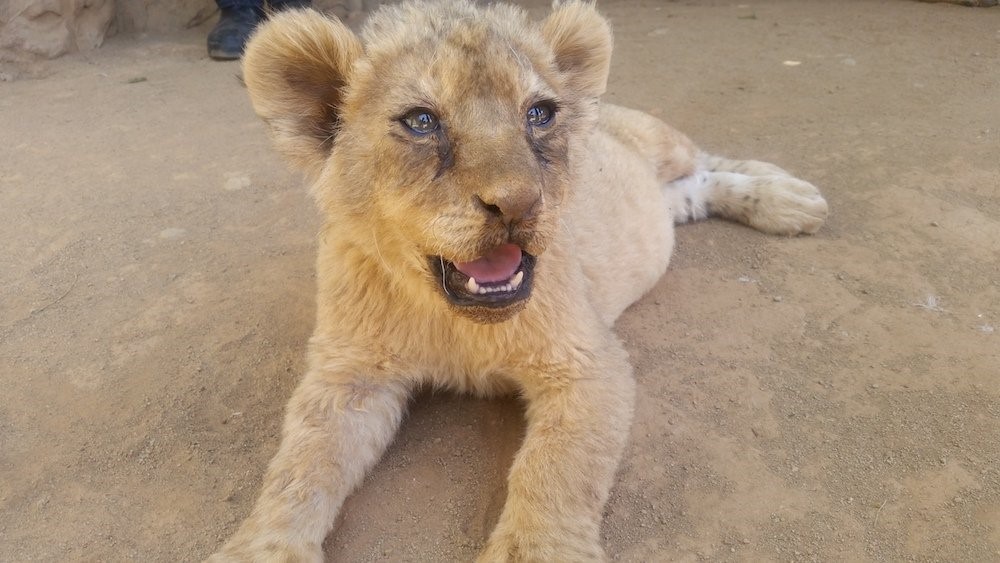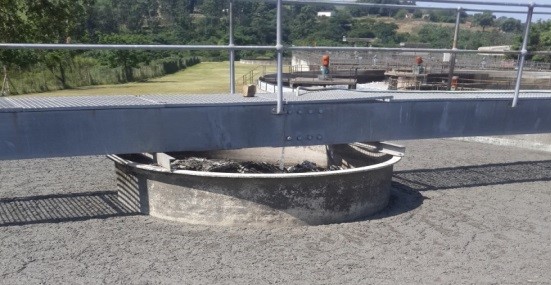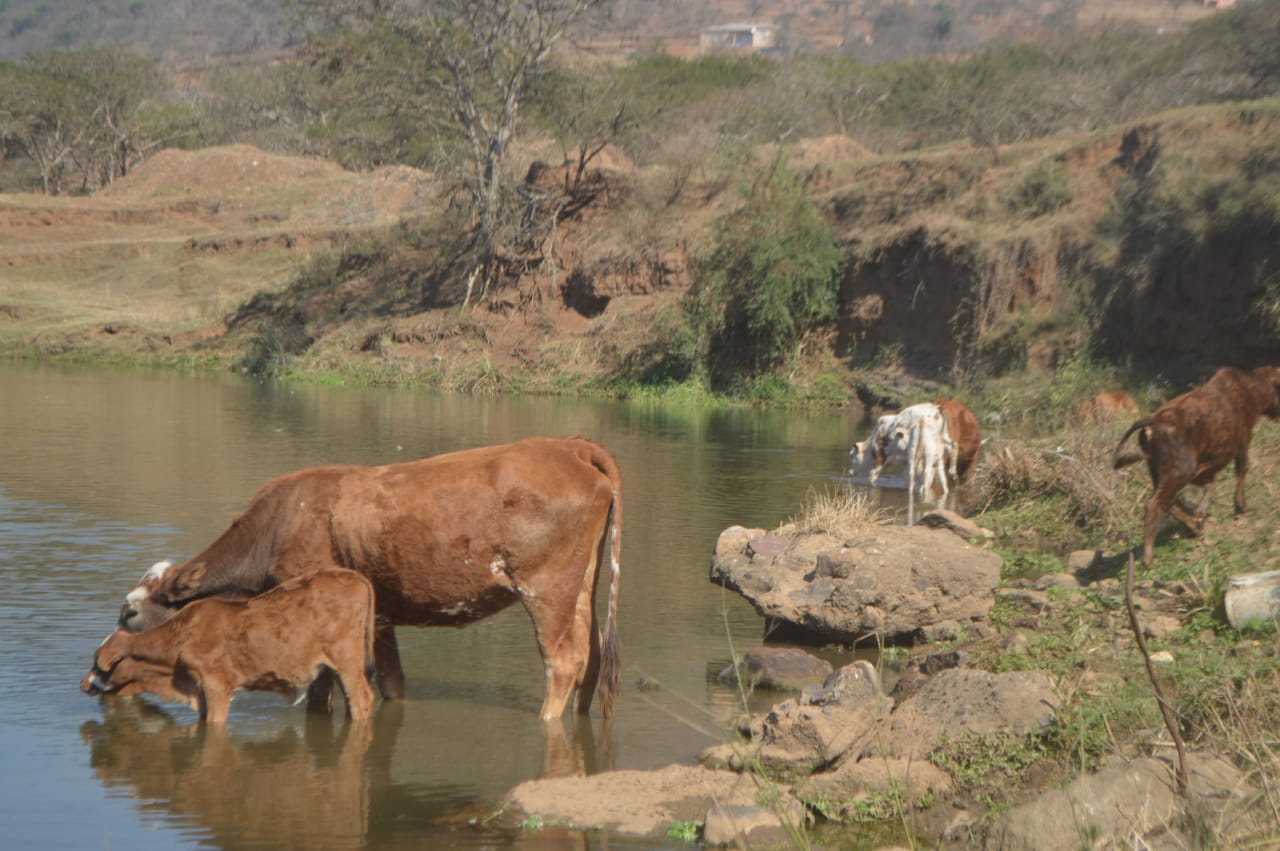Another vulture poisoning incident, discovered two days before Christmas in far northern KwaZulu-Natal, has sparked warnings that the region’s diminishing vulture populations could face extinction if belief-based use is not addressed, writes Fred Kockott
- Fifteen white-backed vultures (Gyps africanus) and a young lappet-faced vulture (Torgos tracheliotos) have died after feeding on a poison-laced impala carcass in northern Zululand last week — the fourth such incident in the region in 2019.
- The heads and feet had been removed from 13 of the dead birds, their bodies concealed in thick bush: experts warn that deliberate poisoning of vultures for belief-based use is on the increase
- More than 1,200 vultures were deliberately poisoned across Southern and Eastern Africa this year, according to the Endangered Wildlife Trust.
First published by Mongabay.com
The tally of vultures harvested for body parts continues to rise in northern KwaZulu-Natal.
Soon after releasing two rehabilitated vultures, rescued from a different poisoning scene earlier this year, WildLife ACT was alerted to another incident on 23 December on Rolling Valley Ranch, located between Pongola and Mkuze in the far north of the province.
“Arriving at a scene like this with everything so fresh, but too late to assist in saving any poisoned birds is heart breaking. Losing one vulture is always a tragedy. Losing at least 16 birds at one feeding is a crisis,” said PJ Roberts, manager of Wildlife ACT’s Emergency Response Team.
Wildlife ACT works closely with Ezemvelo KZN Wildlife, local farmers and communities, and other conservation groups to protect three endangered vulture species in KwaZulu-Natal.
The first bird found, a white-backed vulture (Gyps africanus), hinted at Roberts’s worst fears: “It had a full crop (still containing undigested food), contorted feet and many dead flies were scattered around its remains — all clear signs of fast-acting poison.”
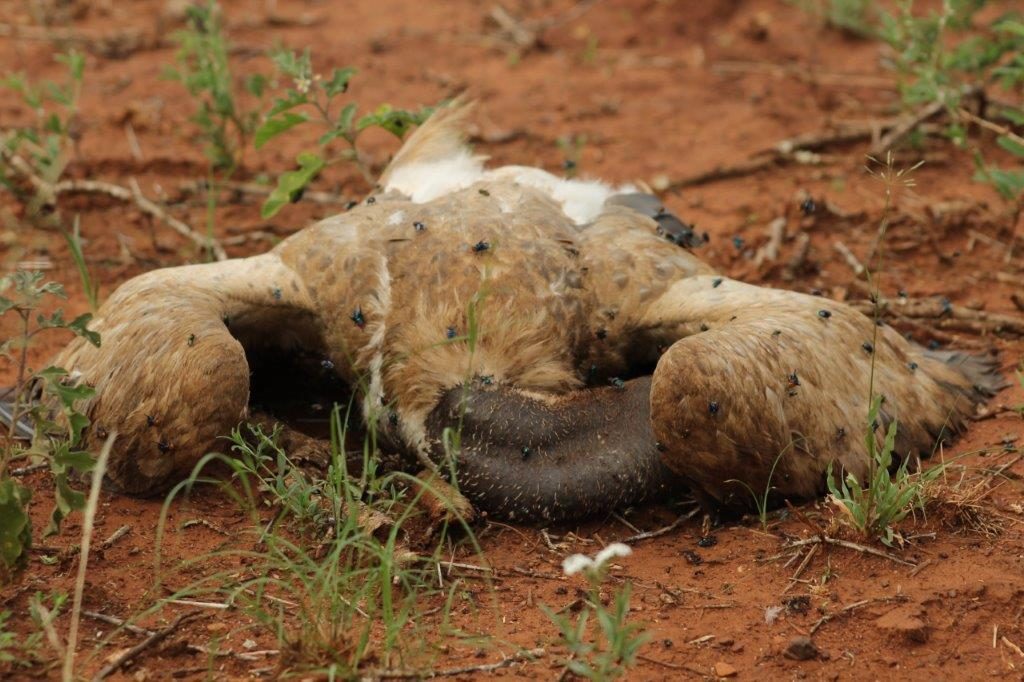
The first dead African White-Backed vulture discovered by the WildLife Act team had a full throat and crop, indicating the bird was still processing the poisoned meat and may have been regurgitating when it died. Photo courtesy of Wildlife Act
The team swept the area, but it took an aerial search in a helicopter to locate more victims. “We landed to find the devastating remains of multiple birds hidden at the base of the tree. Included in this discovery was the removed, yellow, wing tags of H065; a young lappet-faced vulture (Torgos tracheliotos) tagged in Hluhluwe-iMfolozi Park in October 2017 as a fledgling,” said Roberts.
“No more than 30m away, the morbid discovery of 13 processed and harvested white-backed vultures, with their heads and feet removed, were found very purposefully hidden in a thick bush,” added Roberts.
Impala bait
Nearby was the body of an impala — snared, killed, and laced with poison. The rangers burned all the contaminated carcasses to ash to remove the poison from the ecosystem.
It is the fourth vulture poisoning incident in northern Zululand this year, bringing the total recorded number of vultures harvested for body parts in this region alone to 53. The actual number of birds killed is believed to be much higher as many incidents are never detected.

A pile of harvested White-Backed Vultures were found hidden away in a bush – all with their heads and feet removed.

Wildlife Act rangers, Mike Staegenmann and PJ Roberts with the 15 poisoned African White-Backed vultures. Photos courtesy of Wildlife Act
The Endangered WildLife Trust’s (EWT) Vultures for Africa programme, Andre Botha, said it was difficult to quantify how many vultures are deliberately poisoned for body parts.
According to records kept by EWT, more than 1,200 vultures have been deliberately poisoned in Southern and Eastern Africa this year. Culprits include poachers who poison the carcasses of elephant and other game in an apparent effort to conceal illegal activities from rangers. These poisonings are referred to as “sentinel poisonings”, as vultures circling over poached animals alert rangers to the killings.
Africa’s vulture populations have already declined by an average 62 percent over the past three decades — with seven species crashing by 80 percent. Experts recently warned that the continent’s vulture populations face the prospect of collapsing, in much the same way as vulture species did in Asia thirty years ago.
Perished
In the early 1990s, millions of Asian vultures died after eating the remains of cows in carcass dumps; India has 500 million cows raised for milk, but not eaten by the majority Hindu population. Scientists identified the culprit: diclofenac, an anti-inflammatory used by vets. Vultures feeding on carcasses containing the drug died swiftly of kidney failure.
The reasons for the African vulture crisis are vastly different. They include habitat loss, ingestion of lead ammunition, collisions with power lines, accidental drownings in farm water reservoirs, and the use of poisoned bait by livestock owners to kill predators like jackals. Vultures feeding off the carcasses subsequently die, often in significant numbers.
But many more are poisoned deliberately to harvest body parts for belief-based use.
“The vultures are killed for their heads and feet and other parts,” said Chris Kelly, a species director at Wildlife ACT. “This is definitely the single biggest threat to diminishing vulture populations in this province,” said Kelly.
In many parts of Africa, vultures are believed to have psychic powers, including an ability to see into the future.
Smoked bird brains
According to a fact sheet from EWT, the brains of the bird are dried, rolled and smoked as joints or simply burnt and the fumes inhaled. Users believe this improves their odds when they gamble on the lottery or place bets on sport. Students take it when preparing for exams. Other reported uses of vultures include consuming their eyes to improve eyesight, their beaks for protection, or their feet to heal fractured bones or make a person run faster.
In 2014, EWT estimated that 130,000 traders, hunters and traditional healers were operating in South Africa. This figure is believed to have increased, sparking calls from conservationists, environmental scientists and wildlife experts at this year’s Conservation Symposium for an awareness-building campaign to reduce this consumption and demand for vulture parts.
“Vultures provide critically important ecosystem services by cleaning up carcasses thus reducing the spread of dangerous diseases such as anthrax and rabies and resulting in highly significant economic and human health benefits,” said Brent Coverdale, an animal scientist for Ezemvelo KZN Wildlife at the symposium. “We really can’t afford to lose them.”
Unabated killings
As vultures are protected by law, it is illegal to possess or kill any of the six vulture species found in South Africa. Nevertheless, deliberate killings continue.
Roberts said the latest poisoning incident had been reported to local police.
“We are hoping this leads to an arrest,” said Roberts. “If the illegal harvest of these birds is not halted, then extinction may be just around the corner and the services that they provide within the ecosystem will be lost forever.”
As part of a bid to save vulture populations, managers of conservation areas and private game reserves in South Africa are collaborating to create safe havens for existing vulture populations. – Additional reporting, Mlu Mdlethse, Roving Reporters
- Kockott is the founding director of Roving Reporters. Mdletshe is a Durban University of Technology journalism graduate.
BANNER IMAGE
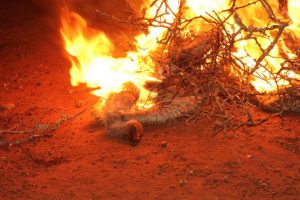
An African White-backed vulture was among sixteen poisoned vultures incinerated on a game ranch in northern KwaZulu-Natal this week. The carcasses were all burned to ash to remove the fast-acting poison from the environment. Photo courtesy of Wildlife Act.
>> Now Read: Lift off for African vulture safe zones

The first of at least five new “vulture safe zones” in Southern Africa are taking off as private landowners and other partners join the battle to save Africa’s imperilled carrion clean-up birds. Read more …
Also read
>> Buzz off! Stinky solutions for a jumbo problem
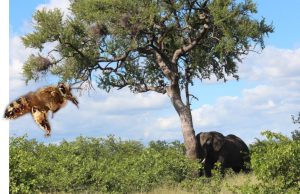
Elephants can fundamentally alter the landscapes as they forage, damaging or killing large trees. Now researchers are trying out pungent potions to keep destructive pachyderms at bay. Read more …

Journalists are trained to answer six key questions: Who, What, Where, When Why, and How. >> Click here to read the 5 W’s and H of Roving Reporters.
Difficult choices must be made about how we utilise natural resources. But these choices need to be well informed if we are to do the least harm. This requires citizens have a clear picture of what is happening on the ground. There are too many vested interests at play to leave things entirely to officials, elected or otherwise. Keeping people in office on their toes and holding powerful interests, including NGOs, to account is an important role of the press. Unfortunately, the media’s ability to do its job has been hollowed away by the decline of traditional advertising support and readerships in the face of online technology. Some papers have closed down, others are a pale shadow of their former selves; everywhere staff are stretched or juniorised. Press standards have declined and false news abounds. Reporting is increasingly superficial, both in print and online media publications. Yet a strong appetite remains for credible news and insights, especially on environmental matters. This underlines the need for Roving Reporters to grow its operations and develop a blueprint for environmental journalism training in Southern Africa. You can support our training progamme, Developing Enviromental Watchdogs by making a donation, no matter how small. Click here for further information.

